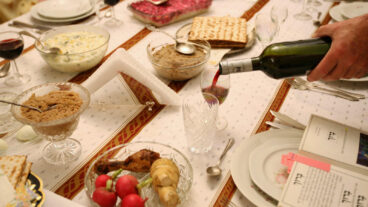A new art collection at Ben-Gurion University is graced by a sculpture from the Spanish Surrealist artist Salvador Dali.Ephraim and Zfira Ilin, owners of the Susita assembly plant that manufactured the only Israeli-made car, slept on a bed designed by Max Ernst. They read by the light of an Andre Masson lamp, and used Arman flatware at dinnertime. The couple collected 20th century art for more than 60 years.
Last year, they donated their collection, which includes sculptures by Rodin, Dali and Giacometti, jewelry by Braque, and paintings by Soutine and Rauschenberg, to Ben-Gurion University of the Negev in Be’er Sheva.
Prof. Haim Finkelstein, chairman of the university’s art history department, is an expert in Dada and Surrealism. Finkelstein can bring his students to the gallery which houses the collection for a look at the Ernst bed, of which there are only five in the world. Attached to the bed is a dangling mirror, and a giant leaf that runs across the cage-like bars that serve as a headboard. In the foyer stands a table designed by Menashe Kadishman and a painting by Tom Wesselman called “Bedroom No. 1.” One of the most beautiful works on show is a bronze female torso by Giacometti sculpted in 1934.
Curator Marie Shek regards this show as an important cultural contribution. “Ilin has brought quality art to the Negev. Works like these deserve to be viewed in a gallery – not on slides. I hope the public comes, and that includes people who have never been to this type of exhibit before.”
Shek’s family immigrated to Israel from Tunisia before the Six-Day War in 1967. “My mother was a sharp woman,” Shek said. “She had a sense that Ramat Aviv was a good place and insisted that we settle there and nowhere else.” Today, Shek moves between her home in Jerusalem and the countries to which her husband is sent as an employee of the Foreign Ministry. But her work in Be’er Sheva is where she feels most fulfilled. “There’s nothing unique about a gallery in north Tel Aviv. Yet somehow in the south, even if it seems a little surrealistic at first, a sculpture by Giacometti just fits in.”
The exhibit opened in May 2001, coinciding with a meeting of the university’s Board of Governors. Maybe there is also something surrealistic about rich donors in haute couture traipsing around the desert. Like others, however, Shek pins her hopes on the vision of Ben-Gurion University president, Avishai Braverman.
“The success of this campus depends on Braverman’s ability to persuade people that there is no real gap between Be’er Sheva and the elite, or between Ben-Gurion University and the outside world. As far as I’m concerned, there is a direct, natural connection between the Israeli desert and a Dali,” she said.
Like all self-respecting academic institutions, Ben-Gurion University has its share of redundancy and duplication. Apart from the artistic activity supervised by Shek, the university organizes exhibits at the Avraham Baron Art Gallery, in the building that houses the main library. On show at the moment is “Women who Paint: Contemporary Israeli Realism,” featuring the work of eight Israeli artists. Haim Maor, coordinator of the art curators’ course, and his students are serving as curators for the show.
The art history department was established eight years ago. Maor, an artist, curator and former editor of Studio magazine, teaches at the department and supervises the course in curatorship, which is now mandatory under the art history major. Maor uses the “immersion technique” to familiarize students with the various aspects of curating an exhibit. This year, his 17 students were assigned the task of mounting a full-scale show by the target date, including interviewing the artists, selecting artwork and preparing materials for the catalog – all on a shoestring budget.
The topic chosen by the students was realist art in Israel. The students received a brief instruction sheet with a list of names and telephone numbers to help them get started. Out of the 50 potential artists discussed, eight were selected, after a decision to focus on women painters.
Maor, who began curating 20 years ago, brings with him a refreshingly original approach: “It’s important to get a full picture of the artist and his work,” he said. “Many years ago I visited the Druse artist Assad Azzi and slept overnight in his living room. The notes I saw on the refrigerator in the morning gave me more insight about Azzi than a whole load of articles. When I was at (Israeli artist Yehezkiel) Streichman’s house and saw all the musical instruments there, it was much easier for me to understand what he meant when he said he was `looking for the music in art.'”
For Maor, curating is like detective work. “You have to put together all the clues and take care not to fall into the trap that certain artists set up, offering overly simplistic interpretations of their work.”
Maor said the students in the curators’ course will soon be organizing a large-scale sculpture exhibit. Shek said Ben-Gurion University recently acquired a collection of 500 works on paper by Duchamp, Picabia and others, donated by the well-known art collector Arturo Schwartz. This collection will be exhibited after the cataloging process is complete.
On display in the foyer of the administration building is the scale-model for an art museum that Ben-Gurion University hopes to build. When such a museum becomes a reality, all the art spaces scattered around the campus will have a home.












